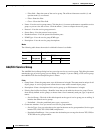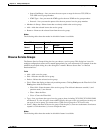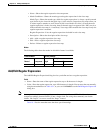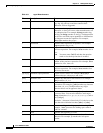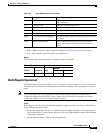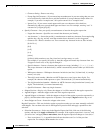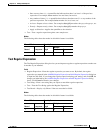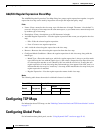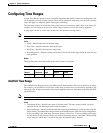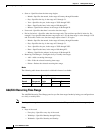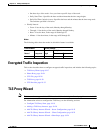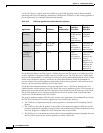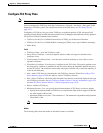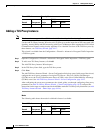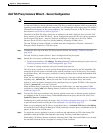
19-14
Cisco ASDM User Guide
OL-16647-01
Chapter 19 Adding Global Objects
Configuring TCP Maps
Add/Edit Regular Expression Class Map
The Add/Edit Regular Expression Class Map dialog box groups regular expressions together. A regular
expression class map can be used by inspection class maps and inspection policy maps.
Fields
• Name—Enter a name for the class map, up to 40 characters in length. The name “class-default” is
reserved. All types of class maps use the same name space, so you cannot reuse a name already used
by another type of class map.
• Description—Enter a description, up to 200 characters in length.
• Available Regular Expressions—Lists the regular expressions that are not yet assigned to the class
map.
–
Edit—Edits the selected regular expression.
–
New—Creates a new regular expression.
• Add—Adds the selected regular expression to the class map.
• Remove—Removes the selected regular expression from the class map.
• Configured Match Conditions—Shows the regular expressions in this class map, along with the
match type.
–
Match Type—Shows the match type, which for regular expressions is always a positive match
type (shown by the icon with the equal sign (=)) the criteria. (Inspection class maps allow you
to create negative matches as well (shown by the icon with the red circle)). If more than one
regular expression is in the class map, then each match type icon appears with “OR” next it, to
indicate that this class map is a “match any” class map; traffic matches the class map if only one
regular expression is matched.
–
Regular Expression—Lists the regular expression names in this class map.
Modes
The following table shows the modes in which this feature is available:
Configuring TCP Maps
For information about TCP maps, see the “Enabling Connection Limits and TCP Normalization” section
on page 27-7.
Configuring Global Pools
For information about global pools, see the “Using Dynamic NAT” section on page 21-16.
Firewall Mode Security Context
Routed Transparent Single
Multiple
Context System
• • • •—



